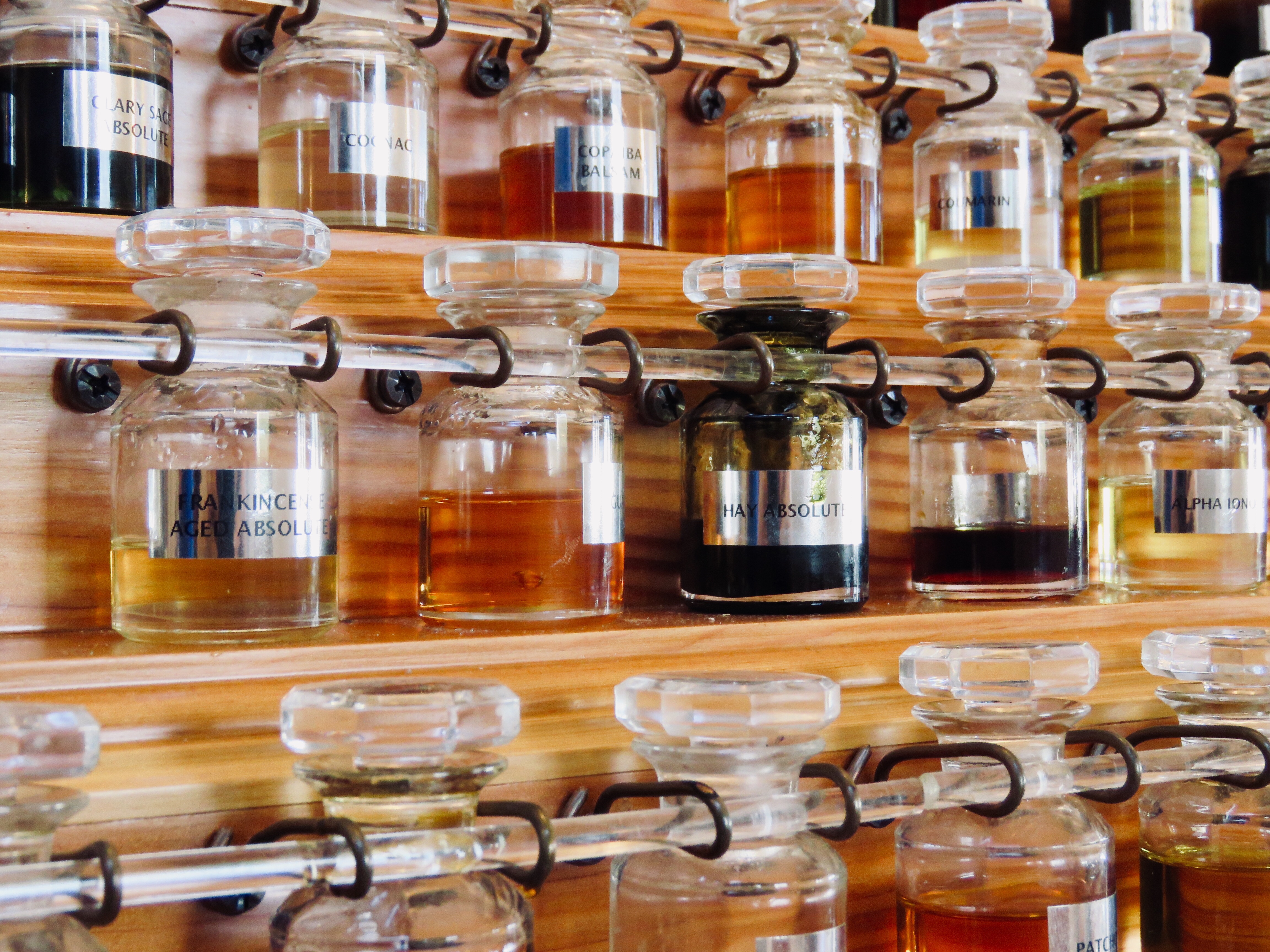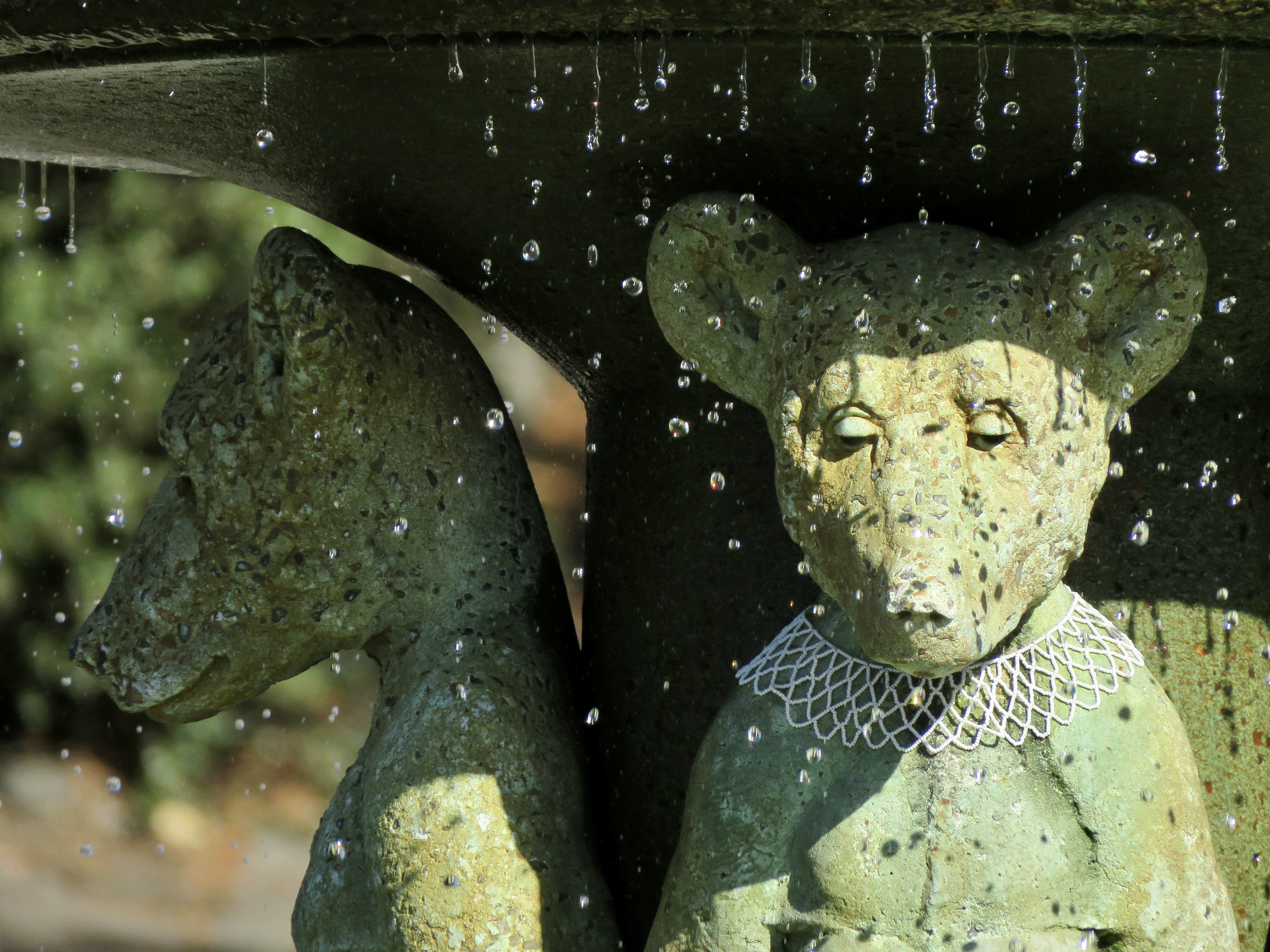My nose needs a nap after taking in dozens of smells this morning from the 300 note perfume organ at the Aftel Archive of Curious Scents. The Archive is a tiny museum located next door to perfumer Mandy Aftel’s home in Berkeley.
Mandy and her son graciously answered our questions about the artifacts on display. Mandy showed us her collection of ambergris, which is used as a natural fixative in perfume. When sperm whales eat squid, they produce ambergris to protect their stomach linings from sharp squid beaks. Sperm whales puke or poop out waxy lumps of ambergris, which then float on the ocean until they are collected and sold. In 2016, three fishermen from Oman harvested 80 kilograms (176 pounds) of ambergris valued at $2.8 million USD! Ambergris smells better than expected – it is musky, earthy, and sweet. Mandy’s son opened a small vial of oud oil and held the stopper under our noses. To me, oud oil evokes a dank moldy forest. It is distilled from agarwood using steam. High quality oud oil may sell for as much as $50,000 USD per kilogram.
We were invited to take home paper strips dipped in our favourite essences. Scott chose dill, plai, and massoia bark. Dill is Scott’s favourite potato chip flavour. Plai is a Thai ginger. Massoia is an evergreen laurel from Papua, New Guinea that smells like sandalwood and coconut. As Scott put his strips in a single glassine envelope, the plai and massoia bark aromas were quickly overpowered by the dill. I chose citronellol, tolu balsam, and ravensara. Citronellol is a compound found in rose oil. Tolu balsam is a dark sticky resin that smells warm and spicy. Ravensara, an evergreen from Madagascar, reminds me of anise and fennel.
Our sensory experiences included not only smells but also tastes. After eating dark chocolate spritzed with essences of cardamom, ginger, and peru balsam, Scott bought a pink peppercorn spray to flavour our salads and ice cream at home. Yum!



